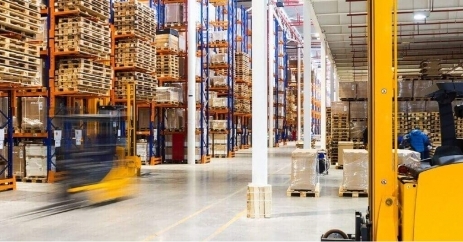Indian industrial, warehousing space leasing to grow 83% in 2021
January 11, 2021: Driven by robust growth in e-commerce and manufacturing sectors as well as rising demand in emerging tier I and tier II cities, industrial and warehousing space absorption in the country is expected to grow by 83 percent to 47.7 million sq ft in 2021, according to Savills India, a global property consultancy firm.

January 11, 2021: Driven by robust growth in e-commerce and manufacturing sectors as well as rising demand in emerging tier I and tier II cities, industrial and warehousing space absorption in the country is expected to grow by 83 percent to 47.7 million sq ft in 2021, according to Savills India, a global property consultancy firm.
The 3PL and e-commerce sectors continued to drive warehousing demand accounting for 60 percent of the total absorption in 2020, followed by the manufacturing sector at 24 percent. In 2020, the industrial and warehousing market witnessed investments in excess of $1 billion.
Srinivas N, managing director, industrial and logistics, Savills India, said, “Growing demand for cold chain, pharmaceutical warehouses as well as growth in e-commerce and organised retail are likely to drive warehousing demand in 2021. In addition, strong macro-economic fundamentals and government’s policy support in implementation will continue to fuel growth for the entire sub asset class of industrial and logistics.”
Share of Indian cities
Among the major cities in India, NCR led with the highest absorption in 2020 at 25 percent followed by Pune at 15 percent. Mumbai and Chennai saw absorption at 13 percent each while Kolkata stood at 12 percent. The Tier-II cities such as Ludhiana, Lucknow, Coimbatore, Jaipur, Guwahati, Bhubaneswar, Nagpur and Patna witnessed around 3 mn sq ft in 2020.
SME’s and electronic component manufacturers leased most between Pune, Chennai & Delhi NCR followed by auto sector leasing in Chennai, Ahmedabad & Pune.
On the supply side, Savills India expects a 113 percent increase in supply to 47.9 mn sq ft in 2021. Despite construction activities getting affected due to the lockdown, the top-8 cities of India witnessed a fresh supply of 22.4 mn sq ft last year. NCR accounted for 22 percent of the total supply witnessed in 2020 followed by Chennai (20 percent), and Bangalore (12 percent). The overall industrial and warehousing space stock is expected to increase by 21 percent at 278 mn sq. ft. in 2021 as compared to 230 mn sq ft last year.
Industrial and logistics – changing market dynamics | |||
Pre-Covid-19 period
2019 | Lockdown period
2020 | Post-lockdown period
2021 | |
Supply | 41mn sq ft | 22 mn sq ft | 48 mn sq ft |
Absorption | 36 mn sq ft | 26 mn sq ft | 48 mn sq ft |
Stock | 205 mn sq ft | 230 mn sq ft | 278 mn sq ft |
*In addition, 3mn sft absorption in Tier 2&3 cities and with pre-committed space in excess of 10 mn sq ft
Warehousing vacancies have also decreased by 170 basis points from 10.2 percent in 2019 to 8.5 percent in 2020 and rental values remained stable in 2020 across the major cities.
Future of Indian warehousing
“India is emerging as an alternate manufacturing investment destination. Foreign manufacturing companies are planning to shift their manufacturing base to India. This would lead to an increased demand for both ready high spec fitted out and custom-built industrial spaces across India particularly from growing sectors such as FMCG, energy, automobile, electronics, pharmaceutical, medical devices among others,” said Srinivas N.
Moving ahead, improved specifications and strong compliance will set the pace and lead to the growth of the industrial and allied sectors. Diverse investment opportunities and growing interest in developing infrastructure around Integrated Industrial Townships, highways, ports, inland waterways, Inland Container Depots (ICD’S), and Free Trade & Warehousing Zones (FTWZs) will boost the sector. Automation and manpower will steer disruptions in the years ahead.



